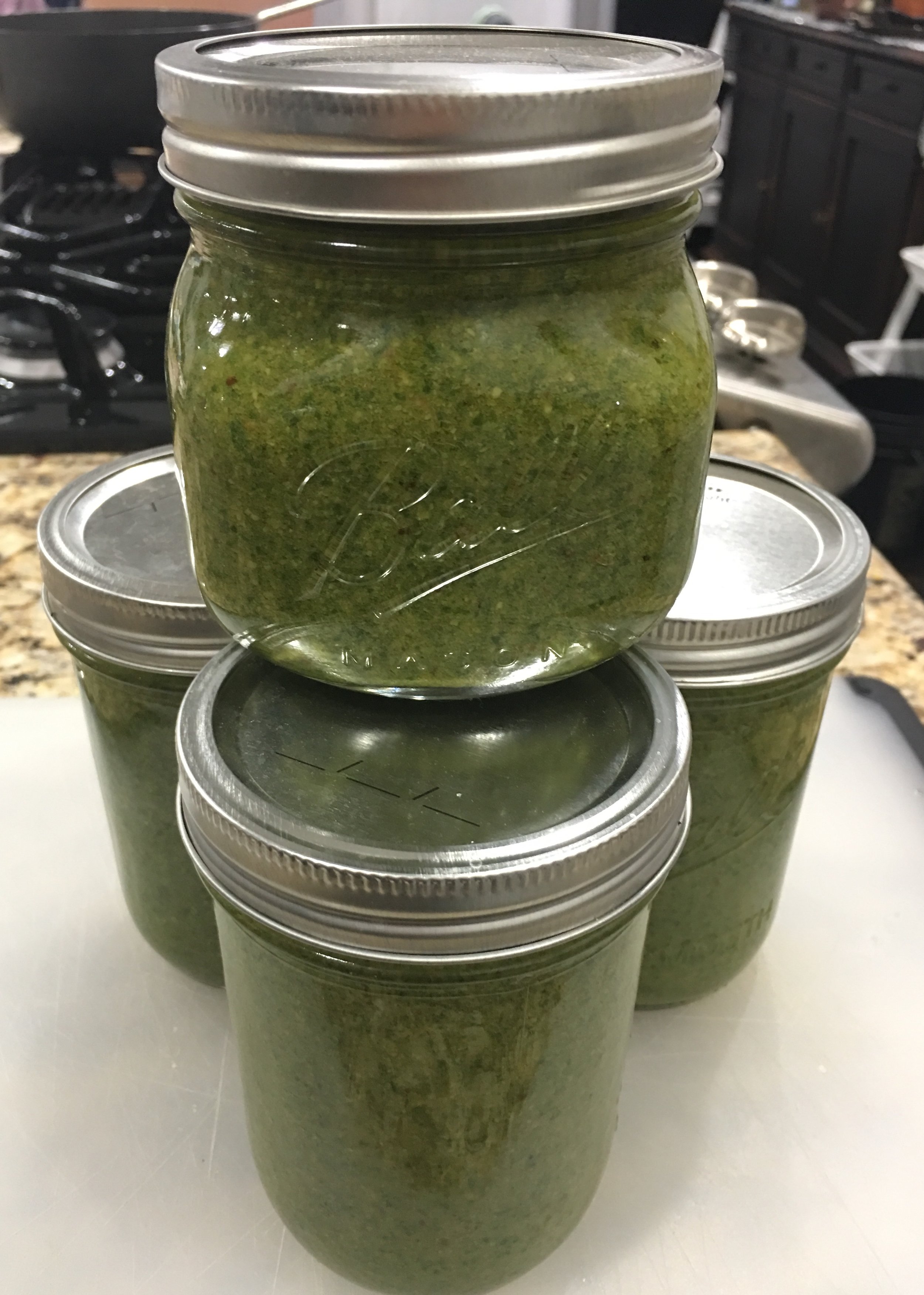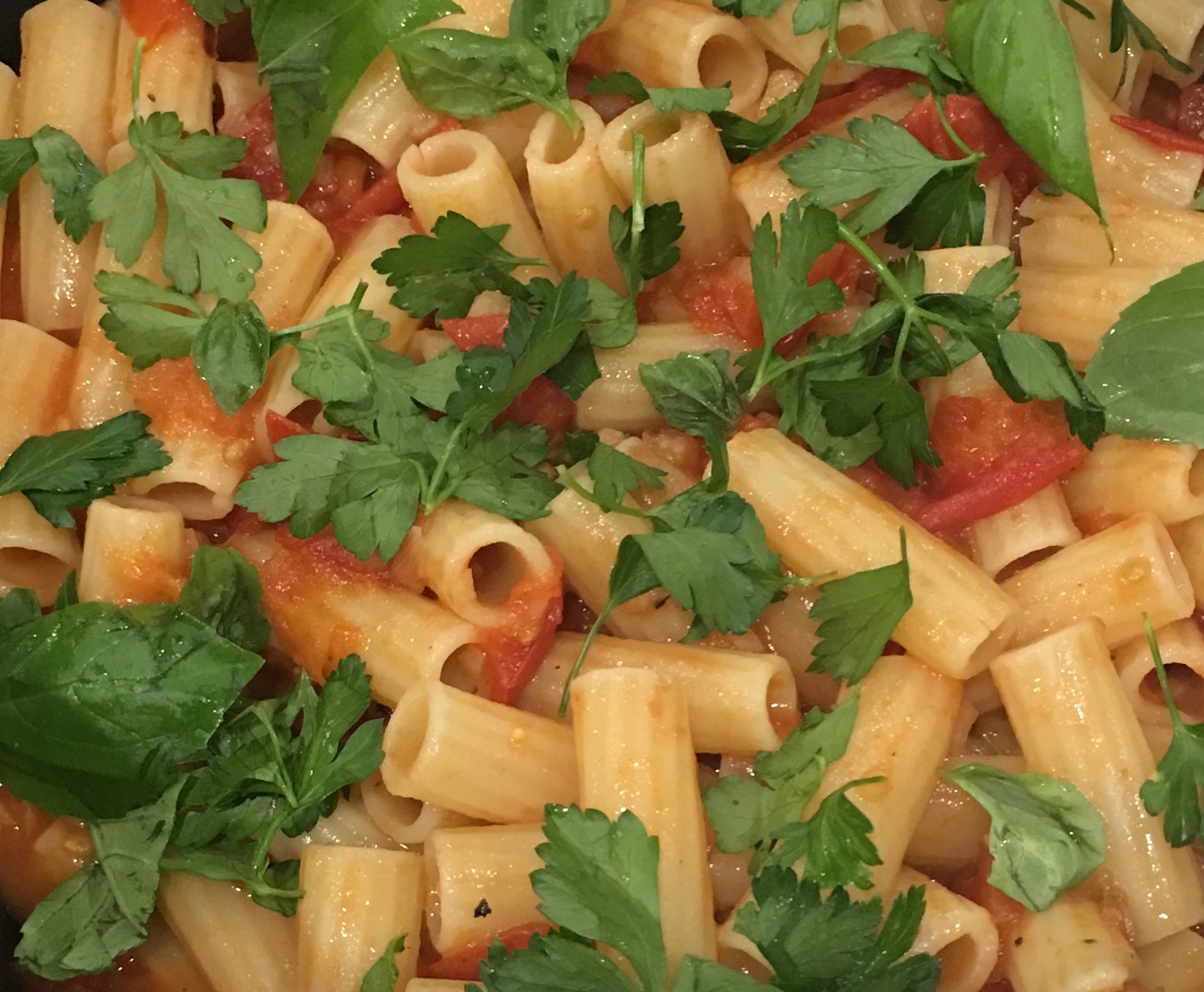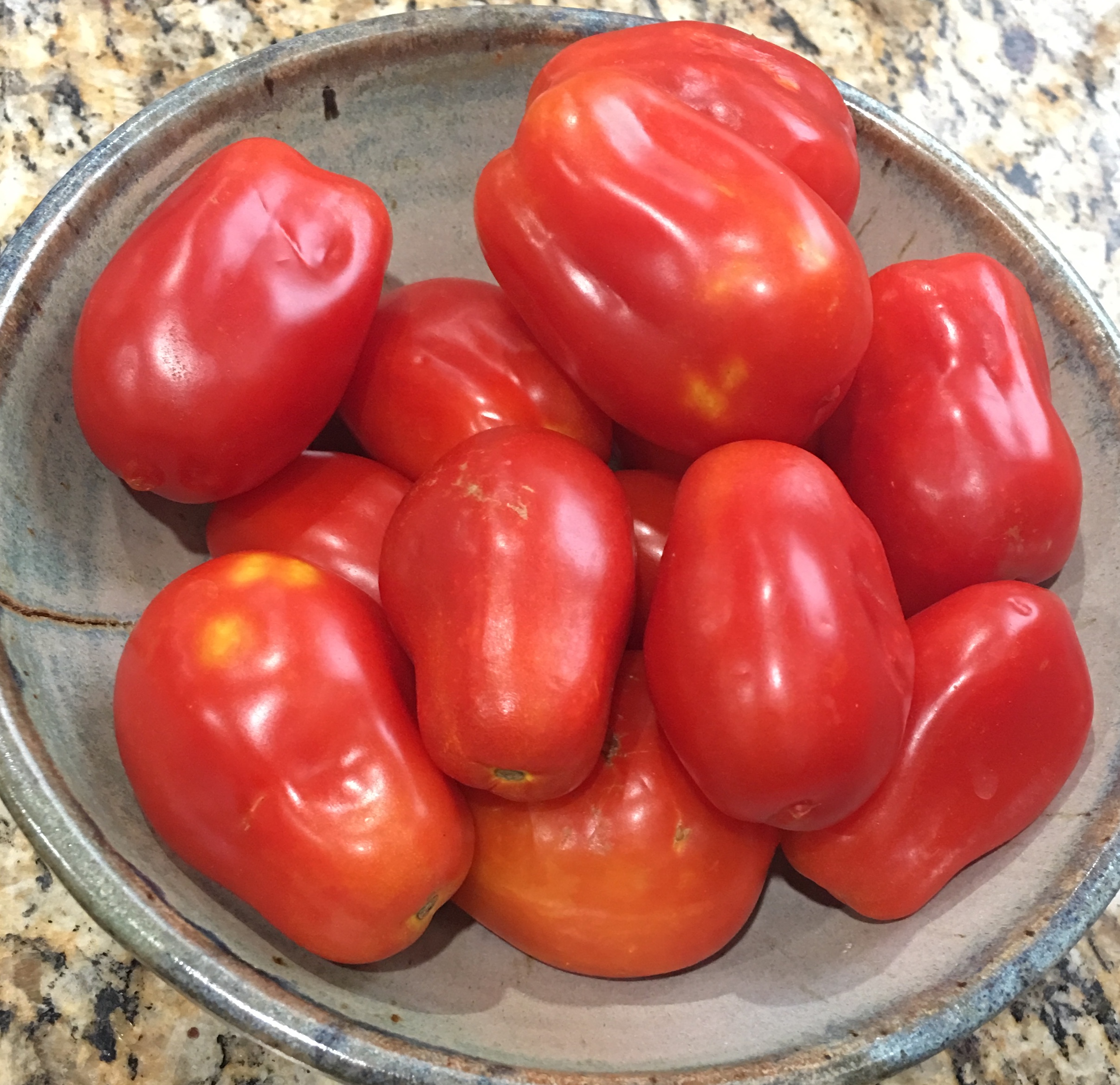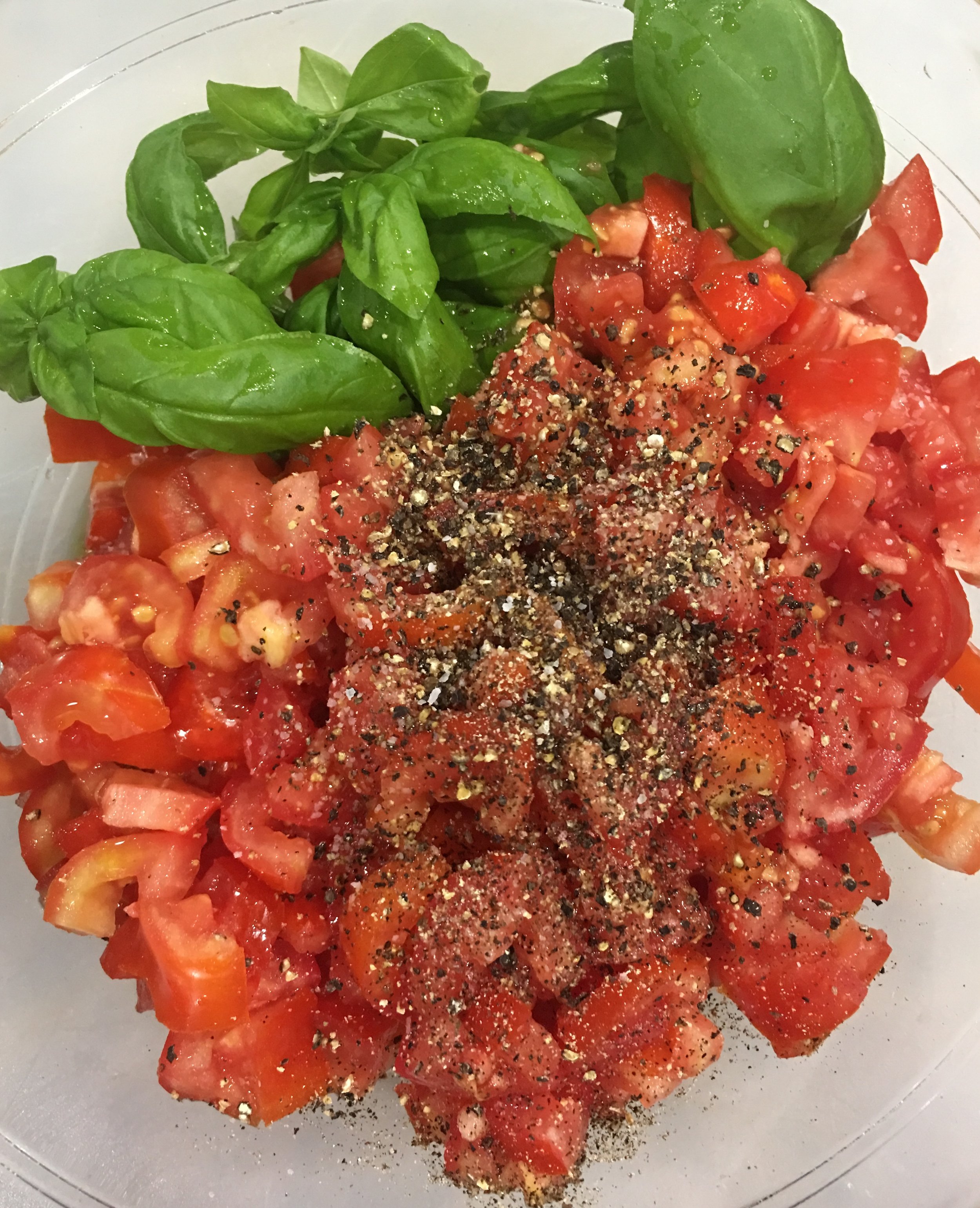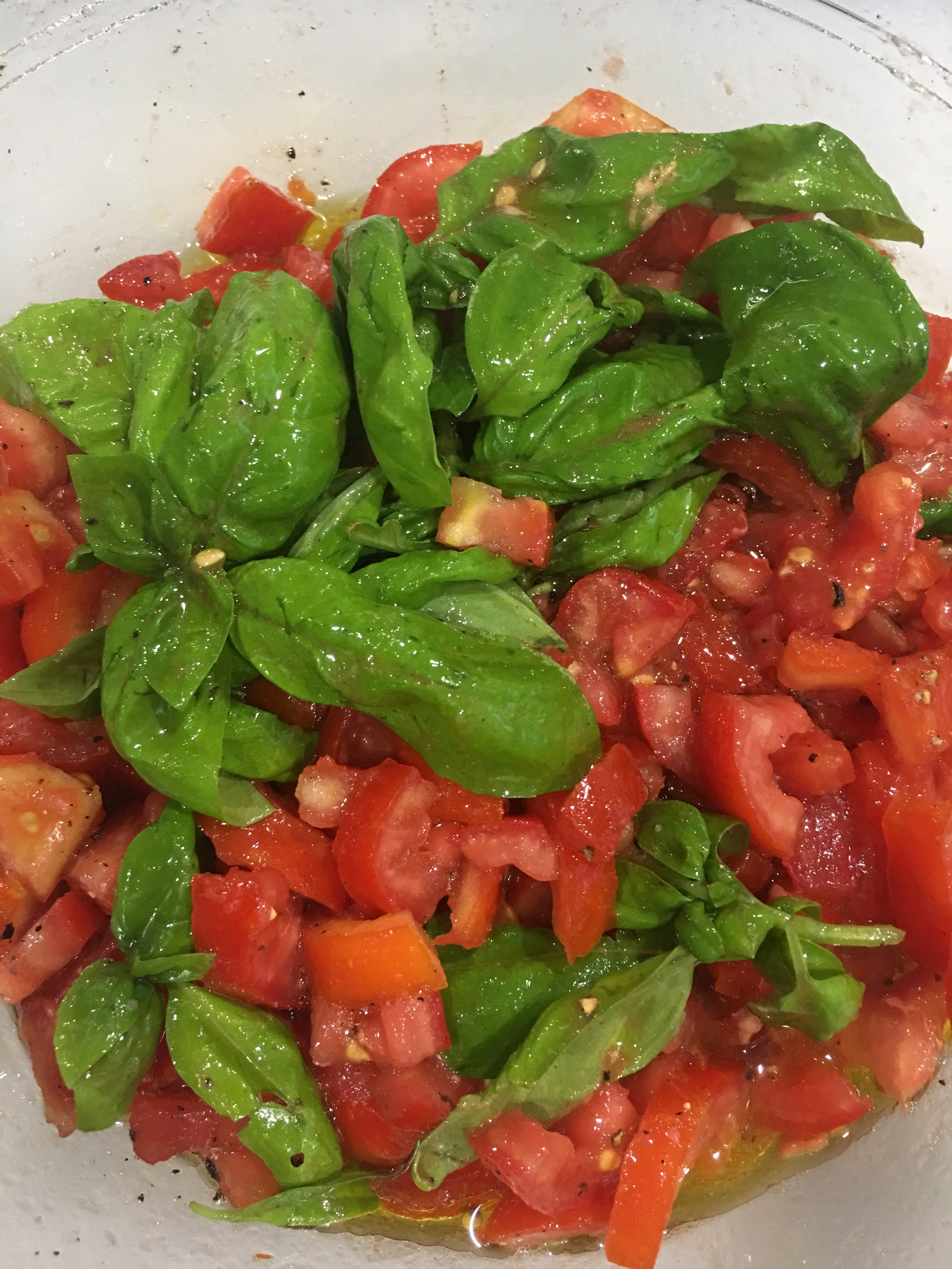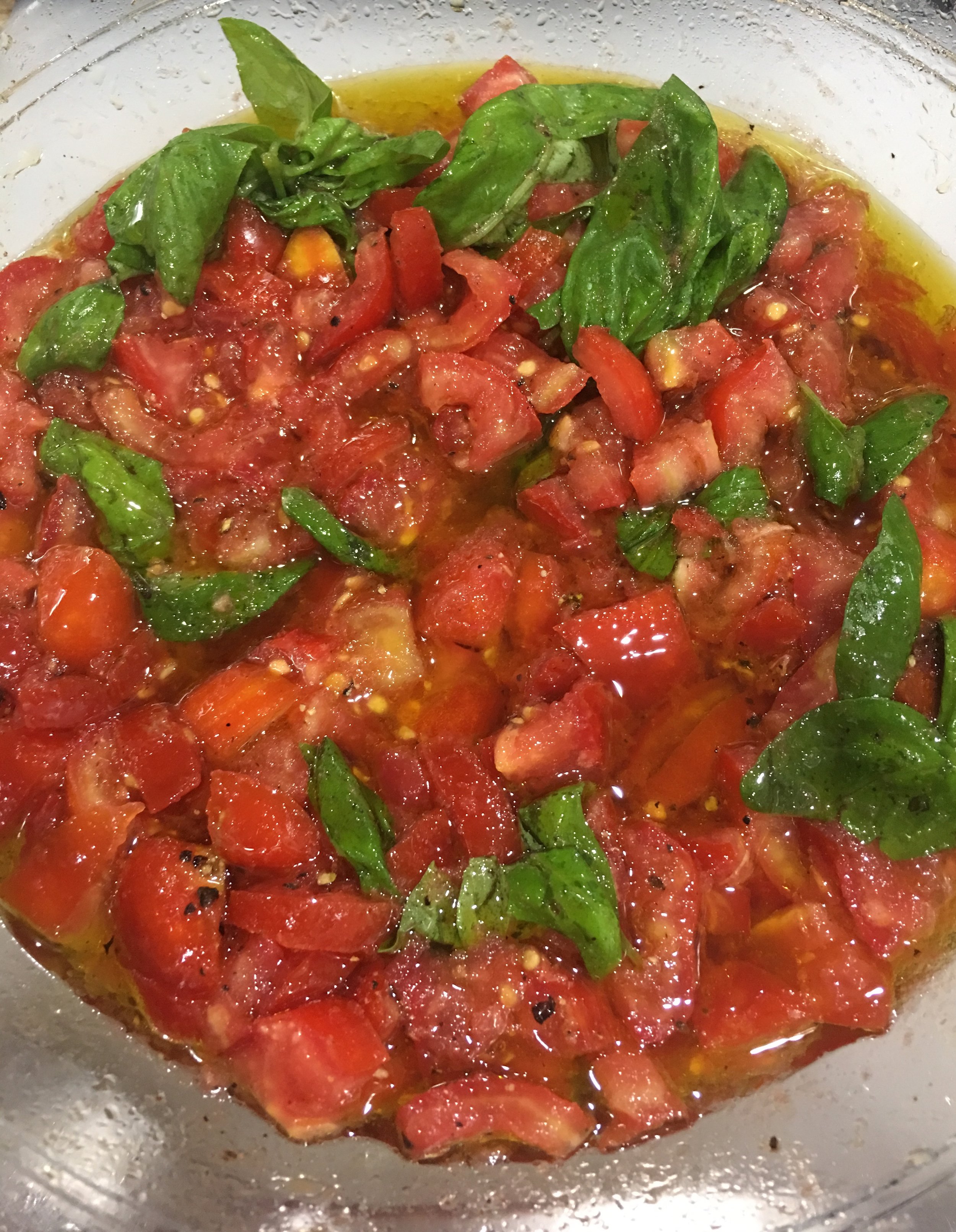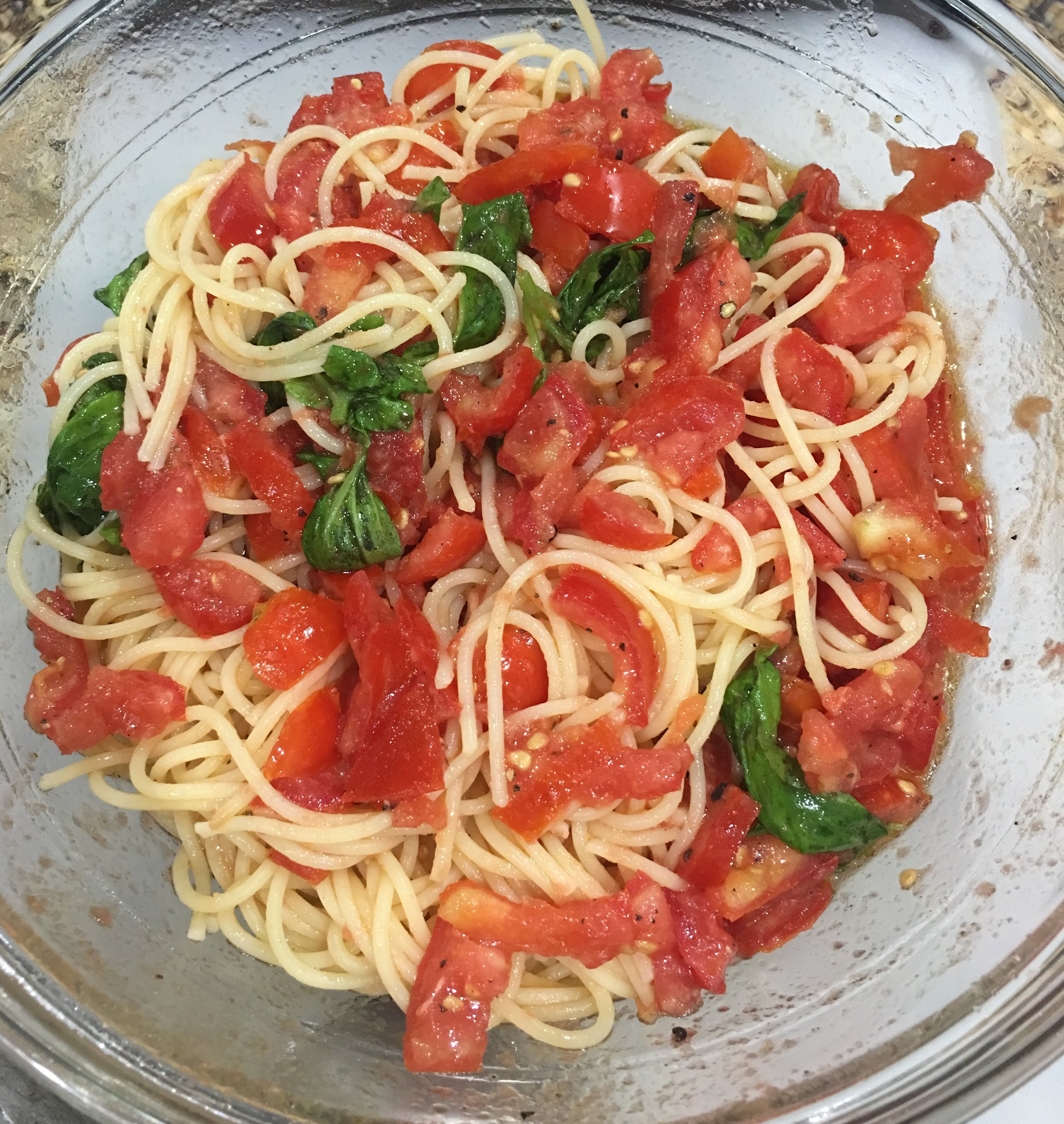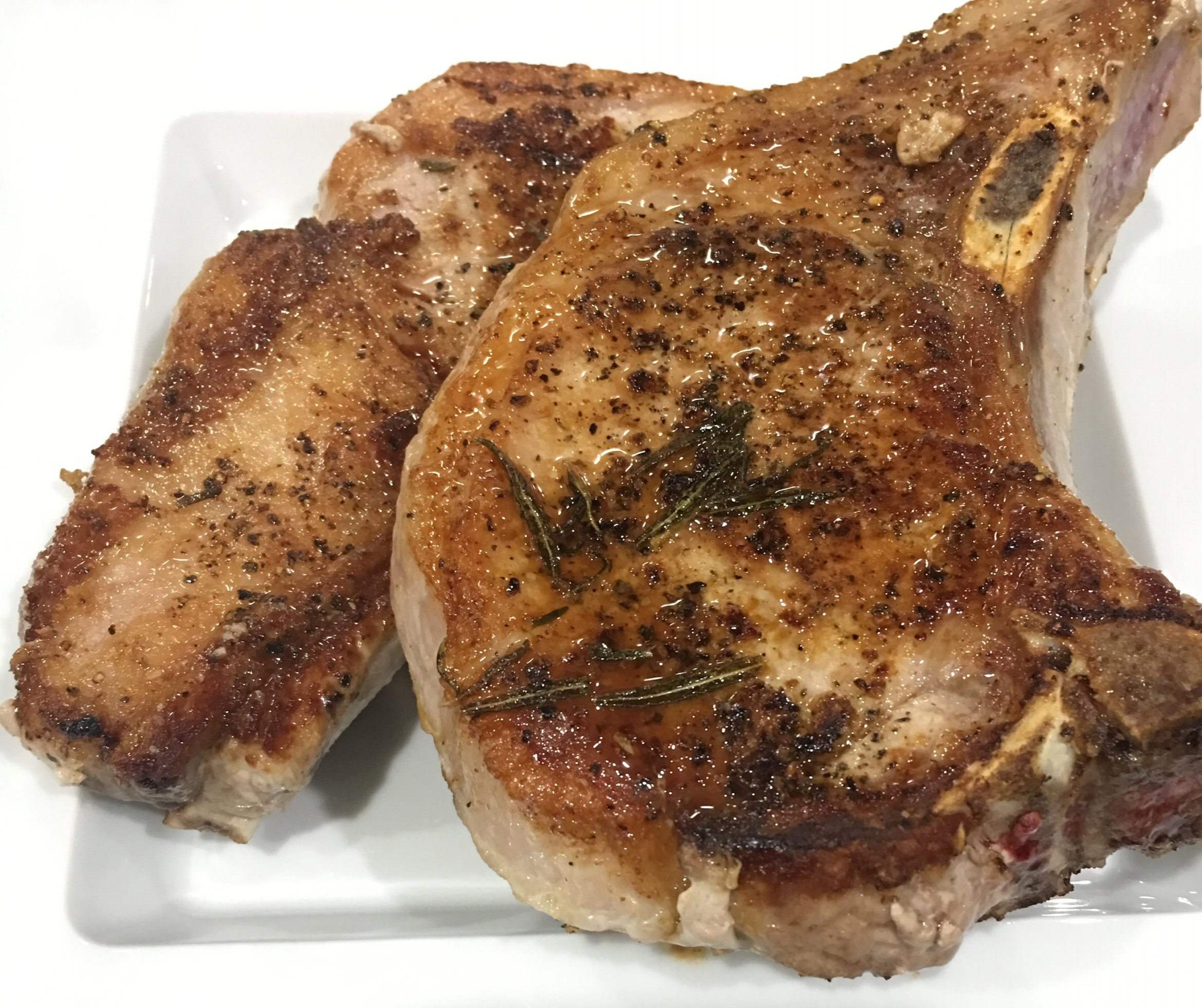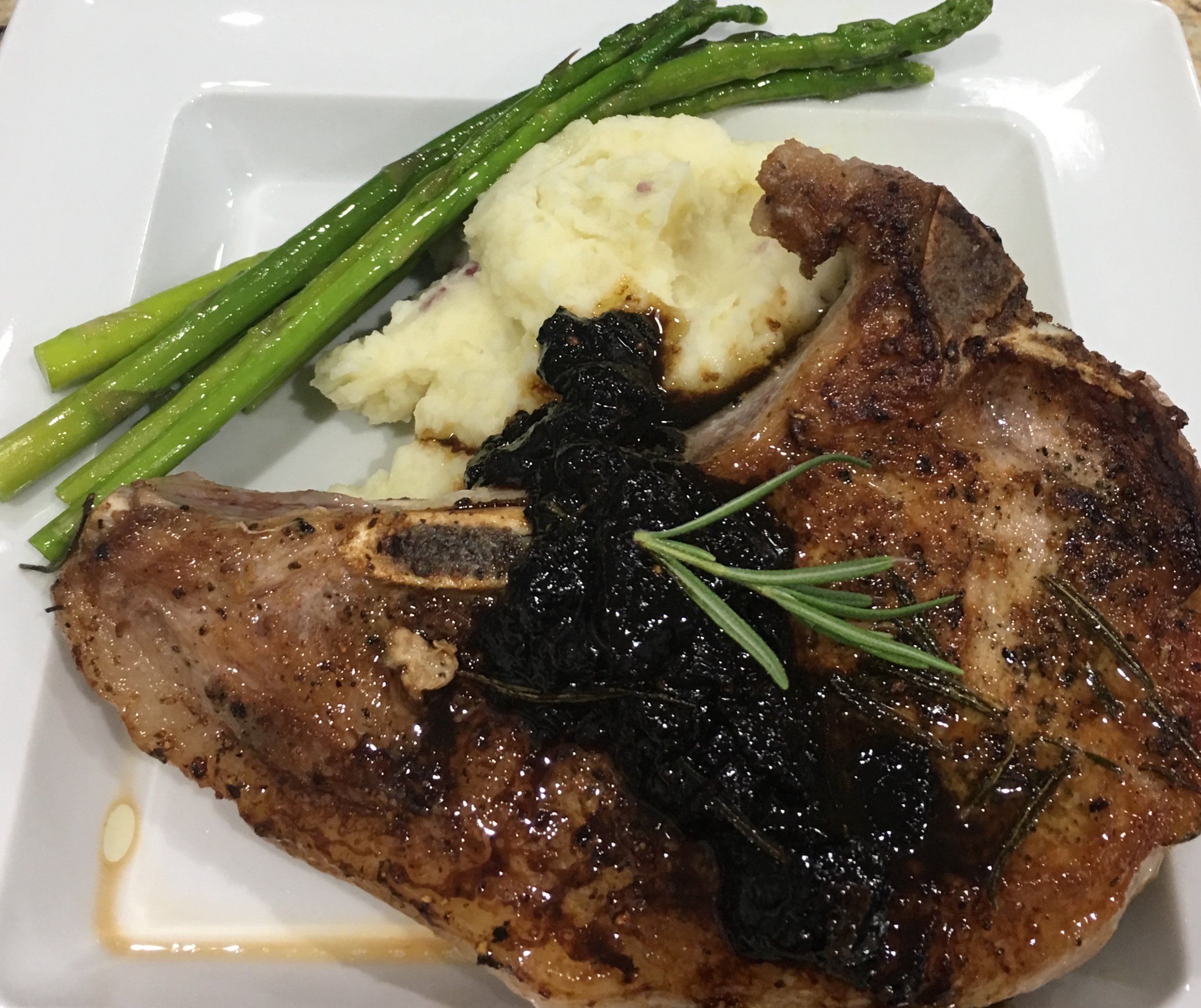The long, hot summer has gotten to the point where basil must be harvested. I was fortunate enough to be given a bucket full of freshly harvested basil, a combination of sweet and Genovese varieties. With that kind of volume, nothing but a quick turn in the food processor will do to make perfect pesto. I'll store it in the freezer to use for the next few months in a variety of ways. Pesto is a versatile sauce that can be used for pasta, with vegetables, added as an accent to soups or to fish or meats. I love to toss a little with steamed potatoes and beans.
I use pecans instead of pine nuts. I like the sweetness and I'm from Texas. Walnuts, almond or a combination of nuts are also really good. I leave out the garlic and add crushed red and ground black peppers for a little bite. I also like to add the zest and juice of a lemon or two. I don't add the cheese to the pesto until I'm ready to use it. I find it this keeps a smoother texture when the pesto is frozen and then thawed.
I always make mine freehand based on taste and texture. I ended up with 16 cups of packed basil leaves, so I scaled up accordingly. I made an effort to keep measurements and scale them down for a smaller quantity, so you may have to adjust for your taste, which you should do anyway.
If you've never made pesto, now's a good time to try it. All you need are the ingredients and a food processor. If you're old school, a mortar and pestle will be even better.
RECIPE: Basil Pesto (With Pecans)
YIELD Makes 2 Cups
INGREDIENTS
- 1 cup pecans (pine nuts, slivered almonds or walnut halves will do)
- 1 teaspoon freshly ground black pepper
- 1/2 teaspoon fine sea salt
- 4 packed cups fresh basil leaves
- 1/2 cup extra-virgin olive oil, plus more for storage
- Juice add zest of 2 lemons
- 1/2 teaspoon crushed red pepper flakes to taste (optional)
- 1/4 cup grated parmagiano regiano (leave this out if freezing)
PROCESS
- Put the nuts in the bowl of a food processor and pulse until coarsely chopped.
- Add the basil, oil, salt, peppers and pulse for 1 minute or so until smooth.
- Add the lemon juice and zest and pulse for 1 minute more, until smooth.
- Stir in the cheese if using soon. Leave this out if you are freezing.
- To store, transfer the pesto to a sterilized jar with a tight-fitting lid. Pour a thin layer of olive oil on top of the pesto, seal and refrigerate up to 10 days or freeze up to 3 months.

